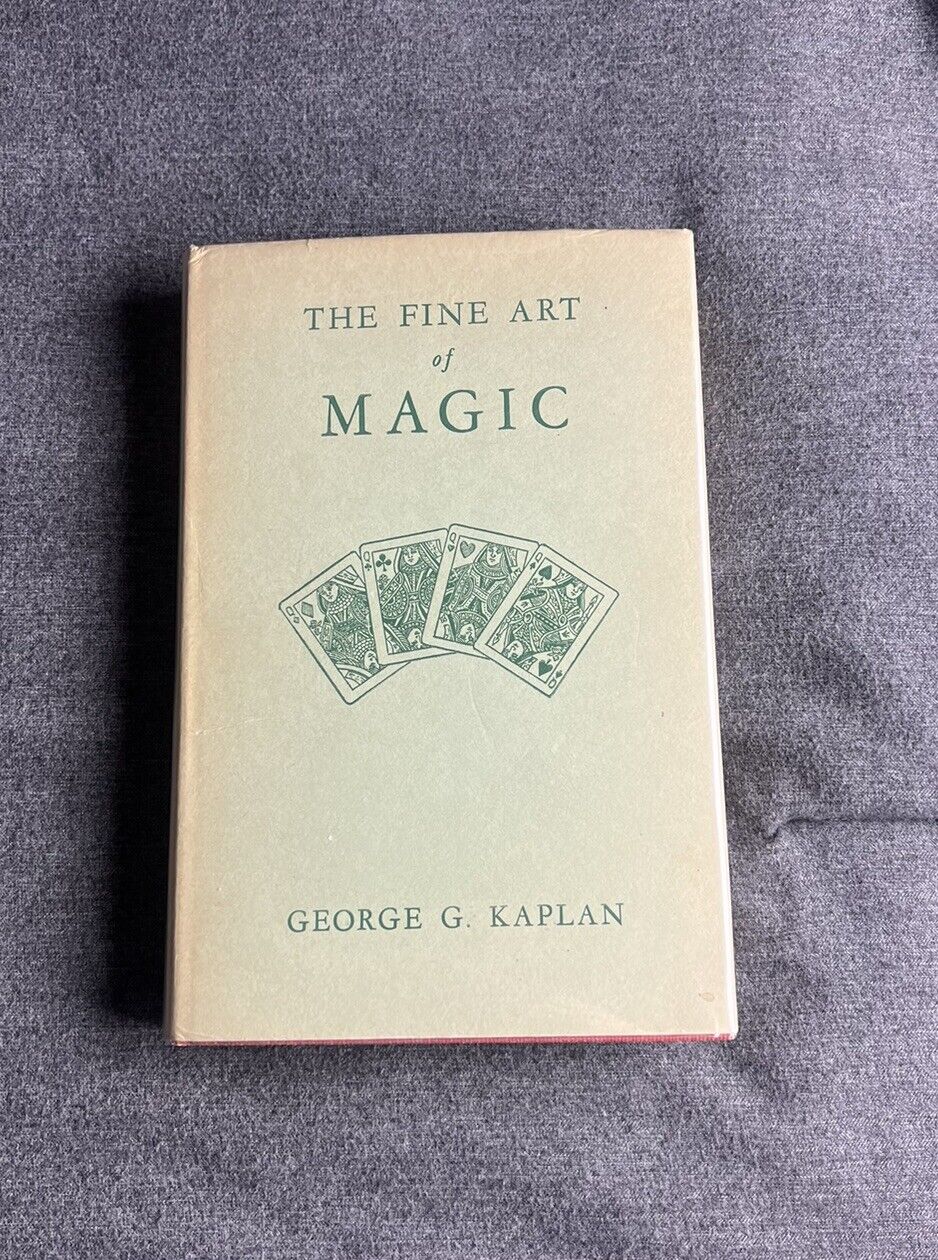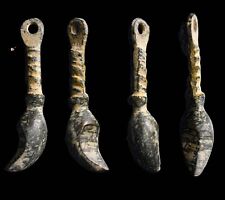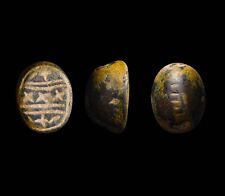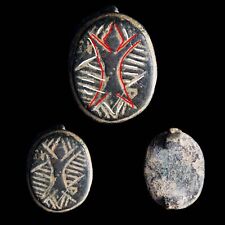When you click on links to various merchants on this site and make a purchase, this can result in this site earning a commission. Affiliate programs and affiliations include, but are not limited to, the eBay Partner Network.
One tamariz said this is his favorite magic book. Many believe this to be the best magic books ever written.
It is extremely hard to find one in this great condition. Especially with the dust jacket completely intact.
This book is in, absolutely beautiful condition!
Some have argued that George Kaplan's Fine Art of Magic is the best magic book ever published. Juan Tamariz says: "Hardly a performance where I do not include an effect from this book. It's the only book that contains only good and excellent tricks."
This magic treatise has stood the test of time. It has become a standard magic reference work. The First Edition is one of the most sought after magic books
"Everything anyone could expect of a book on magic - An outstanding collection of new, completely practical and easily workable tricks. ... There are no idle dreams,... but practical effects which have been audience tested time and time again. The close attention given to detail, the simplicity of working and the various subtleties employed, all point to the fact that much careful thought has gone before and that only a result approaching perfection would suffice ... It's a fine book." - J.G. Thompson, Jr.
"I've spotted a dozen tricks I've put down for immediate use, and any number of other items I'll get into in the future. ... The material is good solid magic - there are no pipe-dreams ... I can't praise the book too highly." - Frederick Braue
"Here is a book of exquisite conjuring. I recommend it enthusiastically to every magician ... It's great." - John Crimmins
Paul Fleming wrote about the 1st edition:
The Fine Art of Magic, by George G. Kaplan, is an entirely new, thoroughly American work. It is the outcome of twenty years or more of analysis, invention, and actual presentation of magic by Mr. Kaplan, whose ingenious feats and striking improvements have aroused the wonder and admiration of many of our best-informed experts. It is, in a very real sense of the term, the "life work" of a man who, though not a professional conjurer, has obviously given an enormous amount of study to the art of magic and made important contributions to its practice by devising new principles, new ways of employing old ones, and some very fine wholly new effects. The present release of this material to the conjuring fraternity must be credited largely to Jean Hugard, who persuaded Mr. Kaplan that the book should be written and agreed to serve as its editor.
An inspection of The Fine Art of Magic discloses the fact that it is a volume of 352 pages, divided into eleven chapters. There are 24 explanations which may be classified as "methods," consisting of sleights, principles, and subtleties. In addition to these means to an end are 80 complete tricks. These include 30 card tricks, eight of which are suitable for platform presentation as well as close-up work; 29 mindreading effects, of which 19 make use of playing-cards and ten employ "props" of other kinds; six tricks with coins; and 15 miscellaneous effects, six of which are classified by the author as platform feats. In the final chapter, entitled Concluding Observations, Mr. Kaplan gives some sound advice on the selection, routining, and indexing of tricks, and lists the items which make up three of his own programs, selected from among the feats explained in his book.
A feature of The Fine Art of Magic that is sure to find favor with many readers is the author's development of a variation of the short-card, called by him the "corner-short" and built into a system of card conjuring which is beautifully deceptive. This simple fake - a single prepared card that can be made by the reader for himself in the matter of a few minutes - makes it possible for the performer to control one or more cards selected or merely peeked at by a spectator, using either the conjurer's pack or a borrowed one, and also to get possession of a desired packet instantly, to retain a prearranged pack in order, and to perform other useful operations. The corner short finds specific application in eight excellent tricks that are explained in Chapter 3; but it is in fact a device which can be used continually by card workers, and one which will particularly delight those who have been discouraged by the difficulties of the "pass" and other standard sleights and are searching for new and better methods of card control.
Card control is also the subject matter of Chapter 2. The procedures here described are thoroughly practicable and comparatively easy methods of handling cards without indulging in any suspicious "moves." Mr. Kaplan is a strong advocate of having cards peeked at instead of drawn from the pack by spectators; and his explanations of the Peek and the Step are excellent illustrations of the ease with which peeked at cards may be promptly and effectively brought under control. Other subtle sleights found in the chapter are the author's methods of riffle-forcing, false-cutting, glimpsing, and an especially good sleight which he calls Master Card Control. Very simple but also very good is his Impromptu Marking of Cards.
The thousands of magical enthusiasts who are particularly fond of magic with cards will rejoice at the substantial amount of space given to card tricks. In addition to the card work we have already noted, and the 19 mindreading tricks in which cards are used, there are a 52-page section (Chapter 4) on close-up card conjuring and another of 37 pages (Chapter 5) on card tricks for the platform. Among the most attractive close-up feats are the Will-o'-the-Wisp Routine (10 pages), in which four playing cards are apparently caused to pass one by one (as each is covered in turn with a 7-inch square of cardboard) through a spread-out newspaper - with only one cardboard cover required; The "Stop!" Fan Discovery, the detection of a chosen card by having the chooser call "Stop!" as the performer moves his finger along the edge of the fanned pack with the backs of the cards toward the spectator; A Lesson in Misdirection, a 5-page explanation of an improved version of Dai Vernon's' Follow the Leader, with the need for the "pass" eliminated; the Rex Card Mystery (10 pages) and The Royal Assembly (6 pages), in which widely separated are brought together in groups; and Multiple Do As I Do, with the cards handled only by spectators and the performer simply directing the proceedings.
The eight platform card tricks in Chapter 5 include Giant Trio-Flight (7 pages), in which the magical transfer of three cards from one counted packet to another becomes distinctly a stage effect; Card-Stabbing (5 pages), the author's own version of this sterling effect, making use of a clever "switch" of packs; The Kaplan Rising Cards, a virtually automatic procedure with freely chosen cards; The Card in the Balloon (7 pages), worked in combination with The Torn and Restored Card; A Winning Wager, a sensational feat with giant cards, in which the performer with perfect safety wagers "twenty dollars to nothing" that he will successfully predict which one of five freely chosen cards a spectator will select; and The Kaplan Torn and Restored Card, which has several novel features including the magical threading of the restored card on a piece of silk ribbon.
"My personal preference has been for tricks of the 'mental' variety," says the author in his foreword. This preference is apparent in the 90 pages or so of mind-reading effects in Chapters 6 and 7. The feats explained in the first of these two chapters are in reality card tricks, but card tricks that are converted into astounding demonstrations of "mentalism" by the presentation prescribed by Mr. Kaplan. Particularly strong effects are his two versions of The Calcutta Mystery, in which the performer seems to exclude all possibility of trickery and yet infallibly predicts the names of cards that are about to be selected; a greatly improved form of The Princess Card Trick, a favorite of the late Nate Leipzig and other card experts; The Yogi's Secret, the discovery (by means of an intriguing new principle) of an out-of-the-room selection; a new version of Dai Vernon's Brain Wave Deck, worked with an ordinary pack of cards; Mahatma Card Control (a trick first explained, we believe, in Sach's Sleight-of-Hand, and much favored by such experts as Nate Leipzig, Al Baker, and Sam Horowitz), in which Mr. Kaplan has made changes which strengthen its immeasurably; and Information, Please! a much improved form of Hilliard's well-known telephone trick. Other good effects in this chapter are two versions of Do As I Do, three card-spelling tricks, and two billet-reading tests.
The second of the chapters on mindreading (Chapter 7) consists of feats in which playing cards, if used at all, play a purely incidental role. The Trance Quick-and-Dead Test here described is an improvement on the familiar demonstrations of this type, in that it not only enables the performer, with speed and without arousing suspicion, to discover the "billet" on which the deceased person's name has been written, but even to announce the name before unfolding the billet. A Capitol Problem, a Kaplan invention with a bewildering effect, is the straightforward discovery of the name of an American President that has been written on a card by a spectator. Mind-Figures is a test in "mental photography," in which the performer seemingly does the impossible by duplicating on a card a geometrical design drawn by a spectator on another card. The Spirit-Slates and Magazine Test gives the effect of producing on two blank slates a message relating to material found on a freely chosen page of a magazine that has been freely selected from a group of four. (The "slate" portion of this test can be used to advantage in many other tricks.)
A Cigarette-Paper Pellet Switch is an undetectable move that enables the magician apparently to get a "spirit message" on an examined cigarette-paper - or, for that matter, to perform The Torn and Restored Cigarette-Paper - and reminds this reviewer of the exquisite work of this type that Karl Germain used to do. The Three-Billet Test No. 3 is a most excellent revelation of a playing-card, a telephone number, and the name of a deceased person which have been written secretly by three spectators. Among the other items in this chapter are two devices that should prove useful in many tricks: (1) an unsuspicious "force" of three numbers, with the aid of a packet of 12 playing cards, and (2) a procedure for forcing "odd" or "even," as may be desired, by means of a throw of dice by a spectator.
Six items with coins (one of which is an effective sleight, and another a puzzle transformed into a clever little mystery) are described in Chapter 8. The Okito Coin-Box, a standard piece of conjuring equipment originated by Theo Bamberg, is the basis of a fine close-up trick which Mr. Kaplan explains in detail. The Stack of Quarters is the author's modernization of a classic feat to which Nate Leipzig, Emil Jarrow, and other well-known magicians have given much attention. Six pages of text and 13 illustrations are used to describe thoroughly "certain subtleties in the correct presentation which are absolutely essential" for getting the maximum effect out of this trick. The Sympathetic Coins, praised by T. Nelson Downs as "one of the finest coin tricks in existence," is rendered more interesting and baffling than ever through the use of two silver and two copper coins instead of four coins of the same kind. As a "follow-up" to this feat, Mr. Kaplan explains a smooth, exceedingly subtle way to remove either of two coins (silver or copper, as freely determined by a spectator), both of which have apparently been securely wrapped in the center of a handkerchief.
Chapter 9 presents 11 miscellaneous items. In The Spirit Handkerchief, good use is made of the well-known "Thayer cabby." The Brema Tube and Bill is a carefully arranged routine with familiar equipment, described with five pages of print and seven illustrations. A Billiard-Ball Transposition is the mystifying transfer of a red and a white ball. The Trap-Door 'Kerchief is an ingenious accessory (which the reader can construct for himself) for "switching" packs of cards and other objects. New light is shed on cigarette-vanishing and rope-cutting; and there are three close-up effects with, respectively, a pin, a die, and some matchsticks.
Probably the most effective tricks in the book - and tricks which are suitable for stage presentation as well as, in some instances, for close-up work - are the six that are explained in Chapter 10, under the title Miscellaneous Platform Tricks. Ben Ali's Rope (7 pages, 18 illustrations) is the author's own version of The Cut and Restored Rope. The Lemon Trick (10 pages, 14 illustrations) is Jarrow's familiar feat in undetectable form, with a detailed description of the best dollar-bill "switch" we have ever seen. Card, Crystal Ball, and Panties is a comedy routine which is largely spoiled for this reviewer who happens to feel that the display of underwear, real or imitation, has no place in a conjuring performance. The Gypsy Thread (9 pages, 18 illustrations) is a perfect gem of clear-cut magic, which Frederick Braue has admiringly called "the Tarbell Rope Trick done with thread." The Comedy of Errors (7 pages, 6 illustrations) is a candle and handkerchief-mindreading combination that includes a half-dozen genuinely funny situations and is quite free of technical difficulties. Finally comes The Kaplan Nest of Boxes Routine (8 pages, 9 illustrations), in which articles borrowed from the audience are caused to disappear and are found shortly thereafter in the innermost of a nest of locked boxes that has been in full view of the audience since the beginning of the performance. In his version of this feat, Mr. Kaplan has eliminated the necessity of using a stage assistant and has made this typically stage trick one which may be shown equally well to large or small audiences.
In line with our general policy of reviewing publications of the Fleming Book Company as objectively as possible, we have emphasized description rather than appraisal in this examination of The Fine Art of Magic; and when we have ventured to praise specific tricks or the book as a whole, we have sought to err, if at all, on the side of under-statement. Our summary of the book should give a reasonably good idea of the nature of its contents, and it necessarily falls far short of suggesting the brilliance of many of the feats and the beautiful simplicity of their execution. Having had the good fortune to witness the performance of a dozen or so of these tricks before knowing how they were done, we can testify to their bewildering effect; and having read the book, in manuscript and proof, a half-dozen times, we may be pardoned for waxing enthusiastic over the expository talents of Mr. Kaplan and his editor, Jean Hugard, and also the remarkably illuminating drawings by Francis Rigney, which are notable for their profusion, clarity, and wealth of detail. lf any work on conjuring has had better illustrations, it has escaped our notice.
The Fine Art of Magic is a book of 352 (x+342) large pages, with 316 line drawings. It is produced in the format of The Fleming Magic Classic Series, being printed from large, clear Baskerville type on Warren's Olde Style White Wove paper, bound in bright red Bancroft buckram, and goldstamped on front cover and spine. The index was prepared by the present reviewer, who predicts that this book will find immediate and permanent favor among the host of magicians who are ever on the lookout for really first-class tricks, for here are sound mysteries that are baffling, entertaining, practicable, and capable of being presented successfully by any serious student of magic who will give the author's carefully written instructions a reasonable amount of intelligent attention and practice.
Contents
Forward To The First Edition
Introduction To The Second Edition
Preface
About George G. Kaplan
About Warren J. Kaps
Chapter 1 Corner-Short & Breather
The Corner-Short
The Secret Gadget
The Breather Crimp
Advantages Of The Corner-Short And Breather Procedure
The Pencil Dot
Locating The Corner-Short Or Breather, And The Delayed-Action Control
Avoiding Contrasts
To Bring The Corner-Short Or Breather To The Top Of The Pack
The Kaplan Fan Cut
To Bring The Corner-Short Or Breather To The Bottom Of The Pack
To Control A Selected Card By Means Of The Corner-Short Or Breather
The Kaplan Control Of A Glimpsed Card By Means Of The Corner-Short Or Breather
Retaining Control Of Several Glimpsed Cards By Means Of The Corner-Short Or Breather
Controlling Three Selected Cards By Means Of The Corner-Short Or Breather
To Bring A Prearranged Packet Above A Chosen Card By Means Of The Corner-Short Or Breather
Obtaining A Desired Packet Instantly By Means Of The Corner-Short Or Breather
Using The Corner-Short Or Breather To Retain A Prearranged Deck In Order
Chapter 2 Subtle Sleights
Master Card Control
The Rifle-Force - A New Angle
The Gambler's False-Cut
The Peek
The Step-Control Of A Peeked At Card
To Glimpse Or Sight A Card Secretly
Impromptu Marking Of Cards
Chapter 3 Tricks Employing Corner-Short Or Breather Crimp
Out-Of-The-Room Selection
The X-Ray Location
Double-Back Corner-Short Location
Mind-Reading With Two Subjects
The "Impossible" Discovery
The Twenty-Sixth Card Location - Using A Corner-Short
Au Naturelle
The Topsy-Turvy Fan
The Kings Arise
Chapter 4 Close-Up Card Tricks
Will-O'-The Wisp Routine
New Card Affinity
Revello Card Circle
The "Stop!" Fan Discovery
Kaplan's Clock Trick
A Lesson In Misdirection
Rex Card Mystery
Multiple Do As I Do
Follow The Arrow
The Card In The Shoe
The Royal Assembly
The Captain Kid Card (1st Version)
The Captain Kid Card (2nd Version)
Magnetic Thought Transference
The Jokers Are On Me!
Chapter 5 Platform Card Tricks
The Lie Detector
Giant Kaplan Rising Cards
The Card In The Balloon
A Winning Wager
The Kaplan Torn And Restored Card
The Chameleon Card
Chapter 6 Mind Reading Tricks With Cards
Ultra Modern Mentalism
The Calcutta Mystery (First Version)
The Calcutta Mystery (Second Version)
The Bombay Mystery
Think
Do As I Do
The Princess Card Trick
The Yogi's Secret
The New Brain-Wave Deck
Mahatma Thought Control
Psychic Sympathy
Twenty-One Cards - A Double Prediction
Crystal Please!
The Medium's Card Test
Yogi Spelling Test
The Eighteen-Cards Spelling Trick
The Triple Spelling Trick
The Three-Billet Test No. 1
The Three-Billet Test No. 2
And Then There Were None
Zig-Zag
Chapter 7 More Mind-Reading Tricks
The Trance Quick-And-Dead Test
A Capitol Problem
An Improved Sealed-Message Reading
Mind-Figures
The Spirit-Slates And Magazine Test
A Cigarette-Paper Pellet Switch
The Three-Billet Test No. 3
Forcing Three Numbers
The Odd-Even Force
Chapter 8 Coin Tricks
The Kaplan Coin Switch
The Kaplan Okito-Box Presentation
I Do As You Do
The Stack Of Quarters
The Sympathetic Coins
Coin-Extraction Perfected
The Kaplan Coin Transposition
Chapter 9 Selected Tricks
The Spirit Handkerchief
A Billiard-Ball Transposition
The Brema Tube And Bill
The Cigarette Vanish In Handkerchief
The Trap-Door 'Kerchief
Tying The Knot For The Rope Trick
The Bent Pin And Nail
The Game Of "Thirty-One" Played With A Die
The Game Of "35"
The Fifteen Match-Sticks Puzzle
Calendar Trick
Chapter 10 Miscellaneous Platform Tricks
Ben Ali's Rope
The Lemon Trick
Card And Crystal Ball
The Gypsy Thread Trick
The Comedy Of Errors
The Kaplan Nest Of Boxes Routine
The Mystery Of The Red Block
Chapter 11 Amusement Area
Whats My Line
He Done Her Wrong
Solid Objects
High Finance
Mathematchsticks
In One Year And The Other
Magic Cross
On The Level
Affair Question
Party Lines
Hire Education
Chapter 12 Concluding Observations







